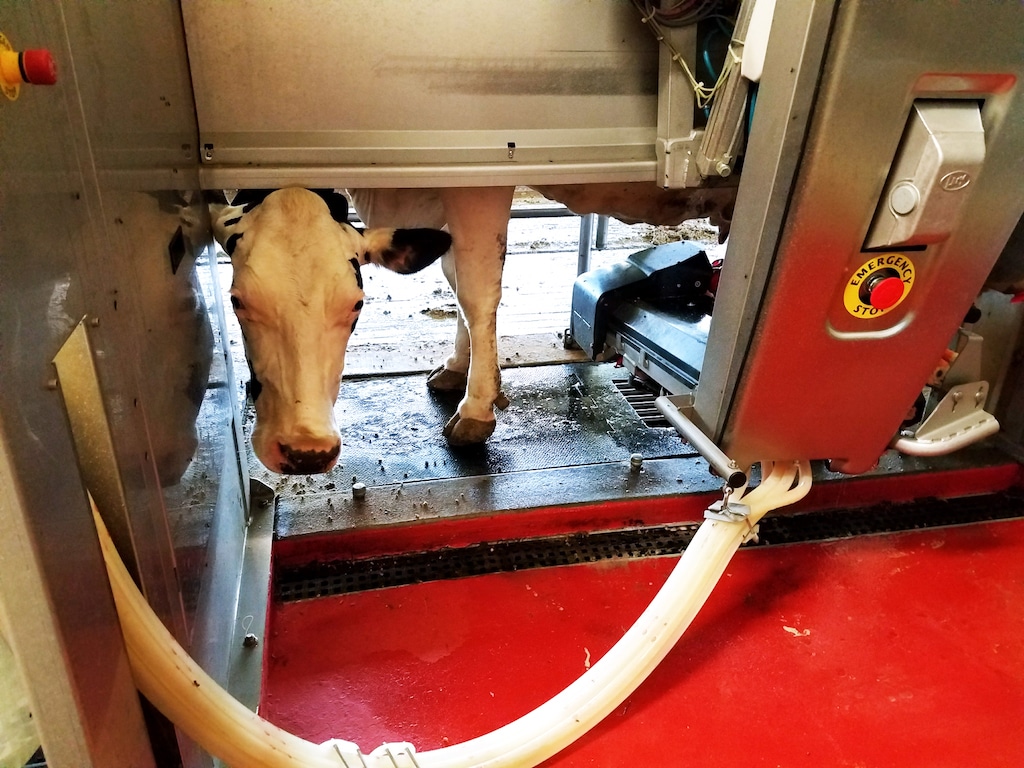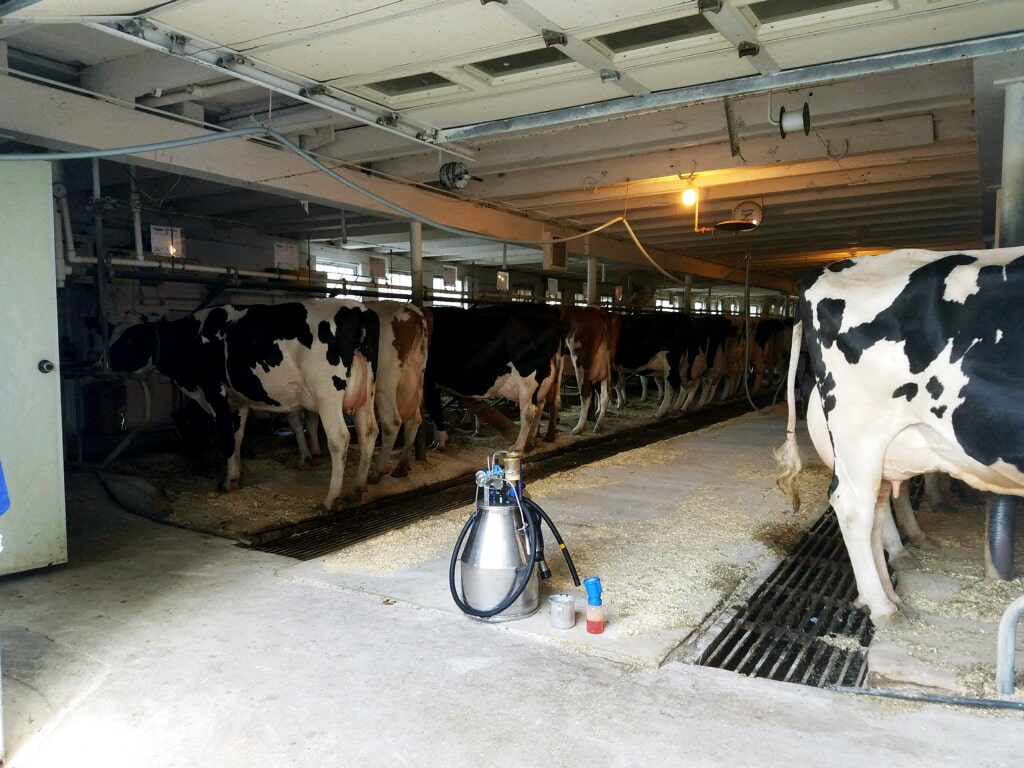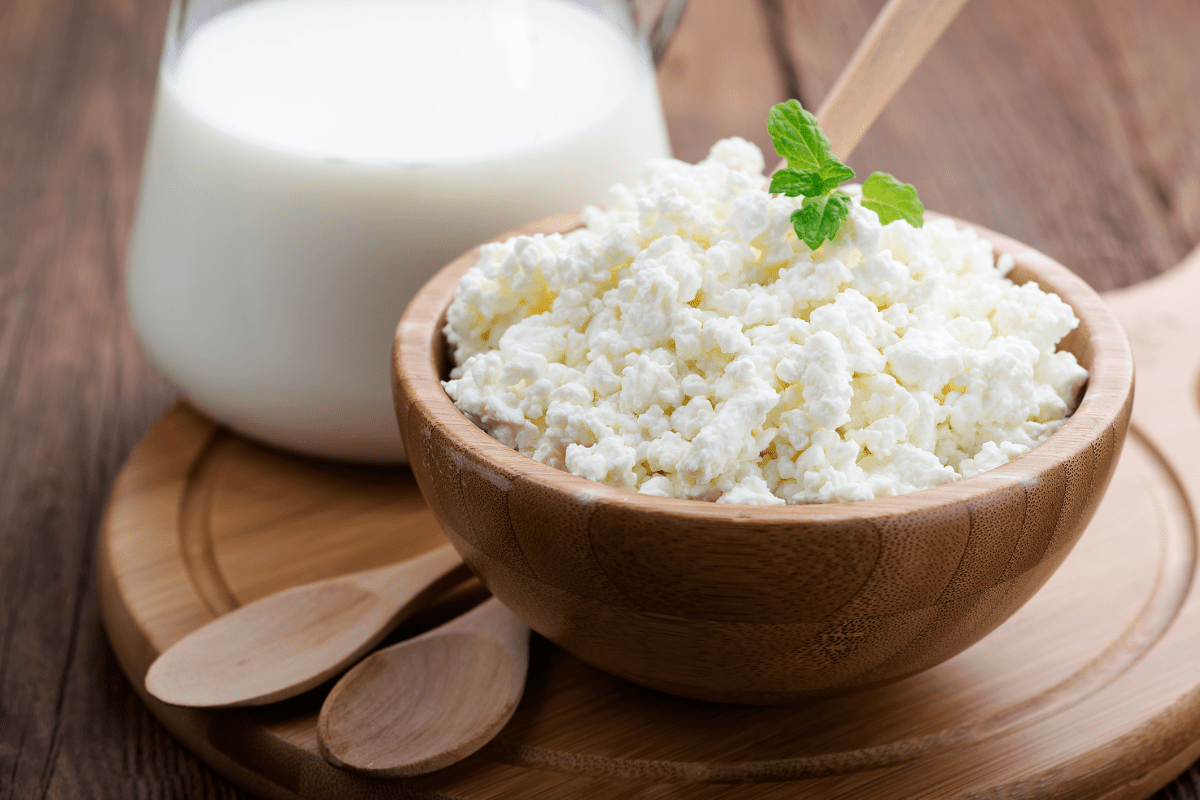I recently toured two dairy farms in Lancaster County, Pennsylvania. They were located within miles of each other but were worlds apart.
The first dairy farm, Stony Path Farm, is truly a “modern” dairy farm, mixing traditional knowledge with modern technology like robots to milk their cows.
The second dairy farm was the complete opposite. The Amish farm we visited believes in simple living, and is reluctant to adopt many conveniences of modern technology. Out of respect for the Amish religion and how they value humility, I will not provide the name of the farm that we visited.
On this journey of learning about these two different dairy farms and cultures, I found that all dairy farms are different, but they have a lot of similarities. This is what I discovered:
1. It’s About Quality Not Quantity
Stony Path Farm uses “Lely: The Astronaut” (yup, that’s really the name) -a robotic milking system. The cost of the machine and installation is a large investment; however, it reduces the cost of labor and allows cows to be milked on their own time-table, which mimics nature.

On the other hand, the Amish farm uses a bucket milker.

It’s extremely labor intensive, requiring hand milking the herd twice a day – once at 5am and again at 5pm. Consistency of the milking schedule is important because cows are creatures of habit.
Although, these farming practices are vastly different, they have one thing in common–a focus on quality.
At Stony Path Farm, a computer system gives milk the initial quality check, while the Amish farm relies on a visual test and extensive experience to look for irregularities. The Amish farmer did use state-of-the-art solar panels to power the machines that test the milk’s quality before the tanker arrives.
“I want to serve the kind of milk I like to drink,” the Amish farmer said highlighting the importance of producing a quality product.
In their effort for quality, dairy farmers understand the importance of cow comfort. They pay close attention to their bedding (yes, cows have beds just like us!). Temperature control in the barns (cows like temperatures between 40-65 degrees) and feed (cows consume a very carefully formulated diet approved by a veterinarian nutritionist) also help farmers of all type ensure quality.
2. Drug Free — Probiotics NOT antibiotics
Both farmers agree, “There’s never antibiotics in milk purchased at the grocery store.”
Whether you buy an organic brand that has labels stating, “No Antibiotics” or regular wholesome milk—ALL MILK IS ANTIBIOTIC FREE.
Every milk tanker entering a processing plant is tested for antibiotics, and in the rare occasion that any are found, the entire tanker of milk is dumped and NEVER makes it into the food stream.
3. It’s a Family Affair
Whether you’re on a modern dairy farm or an Amish farm–the entire family is involved in every aspect of the business. In fact, 97 percent of dairy farms are family-owned and operated. Every family member has a vital role on the dairy farm including the children. On Stony Path Farm, the daughter is responsible for feeding and caring for their dairy beef. The two young boys are responsible for feeding the calves.
On the Amish farm I visited, the wife was right there with her husband, milking the cows and the children (all under 5 years of age) tagged along to support their parents and learn the process.
Why, you might ask? Because dairy farming is their lives.
A longstanding history is reflected in everything dairy farmers do, and every decision they make. Before most of us are awake, dairy farmers have milked and fed their cows, freshened the cows bedding, and probably shared a nutritious breakfast (with milk, yogurt and cheese, of course) with their family. On top of that – it’s a thankless job. When we go to the store, pick up our milk and walk away, we don’t stop to think of the effort that goes into getting that gallon of milk to market.
So, the next time you run to the store for a gallon of milk, think about those dairy families and the tremendous mission they have undertaken–feeding you and your family.





